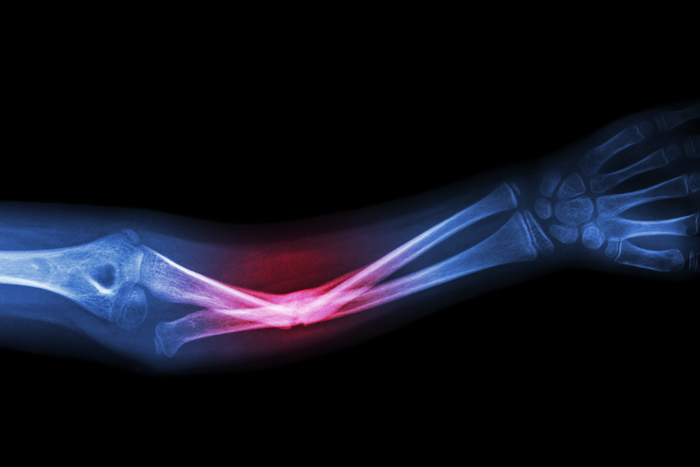Management of Open Fractures Treatment & Diagnostics in Chembur, Mumbai
Management of Open Fractures
Arthroscopy is commonly required when the skin around the fractured bone has an open incision or an open fracture, also known as a compound fracture. A bone fragment breaking through the skin at the time of the injury is the most common cause of this wound.
A closed fracture, which has no open wound, requires a different treatment. Because germs from the dirt and other impurities can enter the injury and cause illness after the skin is damaged. Before searching for the best ortho doctor near me, check out all the information you need.

What do we need to know about management of open fractures and arthroscopy?
Doctors usually use general or regional anesthesia during this procedure. These are the following steps:
- Irrigation and debridement
Debridement removes all foreign and polluted materials from a wound and damaged tissue. If the incision is too tiny, your doctor may need to widen it to include all afflicted bones and soft tissue regions. After cleansing or rinsing the wound, a saline solution is used to wash or rinse it.
Your doctor will assess the fracture and fix the bones once the wound has been cleansed. Both internal and external fixation are used to treat open fractures.
- Fixing internally
Metal implants — plates, rods or screws—are placed on the surface or inside the damaged bone during this surgery. While the fracture heals, the implants will keep the bones together and maintain their position.
- Fixing from the outside
Your doctor may use external fixation on your wounded limb if your wound and damaged bones aren't suitable for permanent implants yet. However, external fixation is used to treat most severe open fractures first.
The metal screws and pins are put in the bone above and below the fracture region. As a result, skin pins and screws rise, joining metal or carbon fiber bars.
The external fixator has the benefit of stabilizing the damaged bone during treatment by your doctor. Additional debridement or tissue and skin grafting may be needed in rare instances to cover the injured bone. As per shoulder arthroscopic surgeons in Mumbai, patients may generally get out of bed and move around despite the open incision via an external fixator.
Until the bones mend completely, an external fixator may be employed to keep them stable. When the fracture has healed, it is removed during a subsequent procedure.
What conditions can lead to this procedure?
- Partial and complete rotator cuff tears
- Dislocations that occur on a recurrent basis
- Adhesive capsulitis and frozen shoulder
- Deposits of calcium
- Loose bodies
- Arthritis
Why is arthroscopy conducted?
Early management of an open fracture is focused on avoiding infection at the injury site. A surgical operation should be performed as quickly as possible to clear up the incision, tissues, and bones. For the wound to heal, the fractured bone must stabilize.
When do you need to see a doctor?
If you have open fractures, see a doctor immediately.
You can request an appointment at Apollo Spectra Hospitals, Chembur, Mumbai.
Call 1860 500 2244 to book an appointment.
What are the benefits?
- There is no wound infection.
- There is no noticeable skin or tissue damage.
- Broken bone fragments can be appropriately placed.
What are the complications?
- Infectious disease
Infection is the most common complication from open fractures. This is because bacteria enter the wound at the moment of damage, causing infection.
Infection can develop early in the healing process or long after the wound and fracture have healed. A condition of the bone might develop chronic (osteomyelitis) and necessitate further procedures.
- Non-unionization
Because the blood supply around the bone was affected at the time of injury, some open fractures may have trouble healing. More surgical procedures may be necessary if a bone does not repair, such as bone grafting and internal fixation.
- Compartment syndrome
When the wounded arm or leg expands, and pressure builds inside the muscles, this condition occurs. When this happens, surgery to release the pressure is imperative. Untreated, the syndrome of the compartment may lead to irreparable tissue damage and functional loss.
Conclusion
Almost all open fractures require surgical treatment. It is essential to get an operation done as soon as possible so that your open wound gets cleaned up and you can avoid infection.
Open fractures or severe injuries require immediate medical attention. While the particular technique for treating an open fracture varies, antibiotics and surgical washing are always needed.
As new clinical research casts doubt on open fracture care orthodoxy, there is debate on the best way to treat open fractures. Open fractures are complicated injuries that necessitate an orthopedic surgeon's consideration of bone and soft tissue damage.
If it is an open fracture, take a clean, unfluffy cloth or cover it with a sterile dressing. To stop bleeding, use pressure instead of the protruding bone. After that, use a bandage to fix the dressing. The patient must remain motionless as a health care provider attends to the injury.
Our Top Specialities
NOTICE BOARD
CONTACT US
CONTACT US
 Book Appointment
Book Appointment


.svg)
.svg)
.svg)
.svg)








